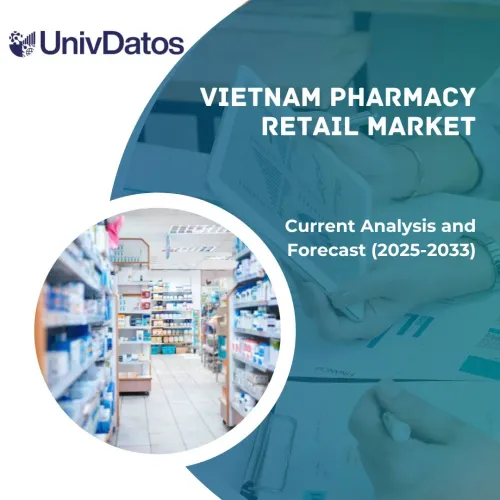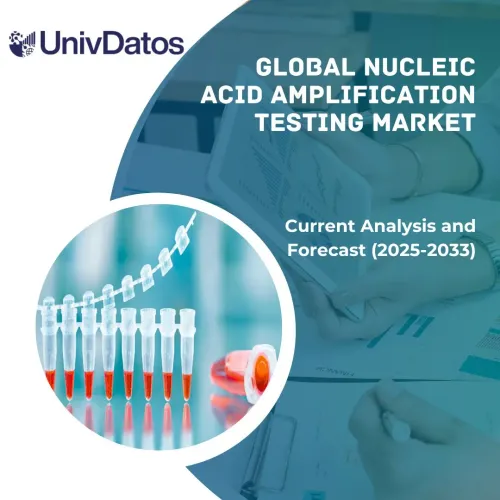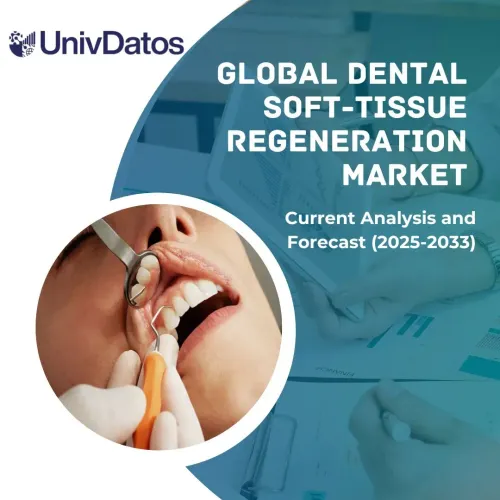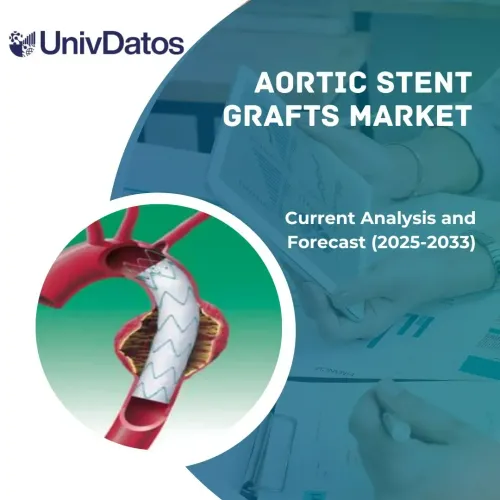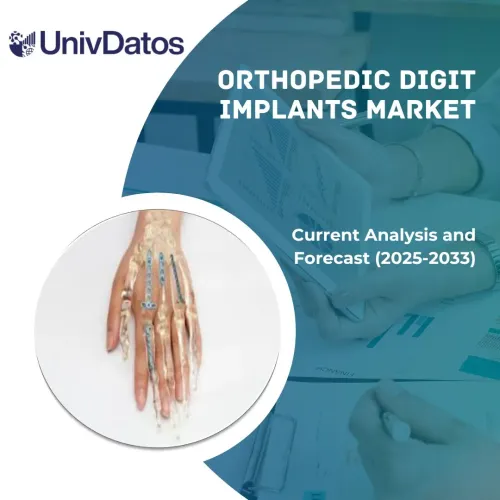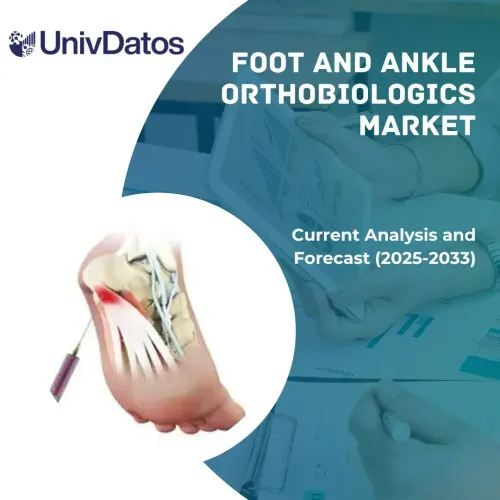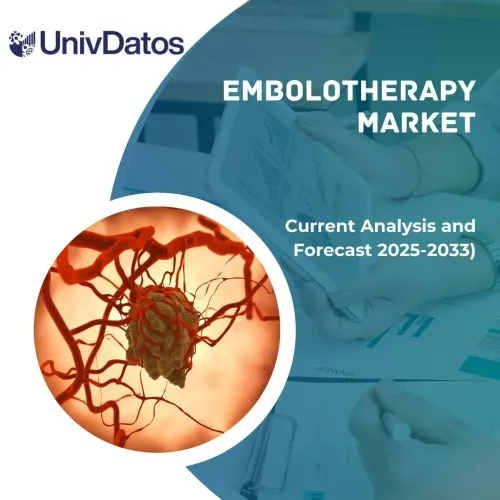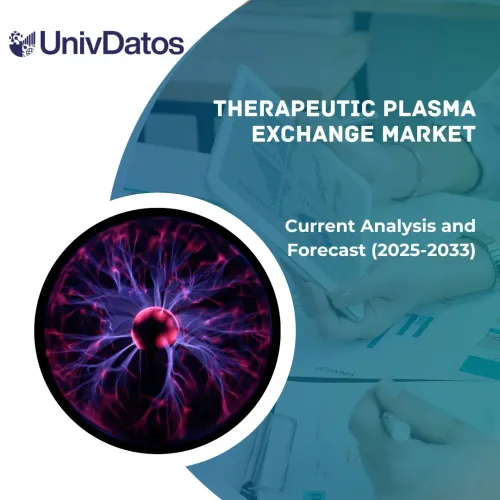Рынок лечения дефицита лизосомальной кислой липазы (LAL-D): текущий анализ и прогноз (2024-2032 гг.)
Акцент на показаниях (болезнь Вольмана и болезнь накопления эфиров холестерина), лечение (ферментзаместительная терапия (ФЗТ), поддерживающая терапия, препараты, модифицирующие липиды, и другие), канал распространения (больничные аптеки, розничные аптеки, онлайн и другие); и регион/страна
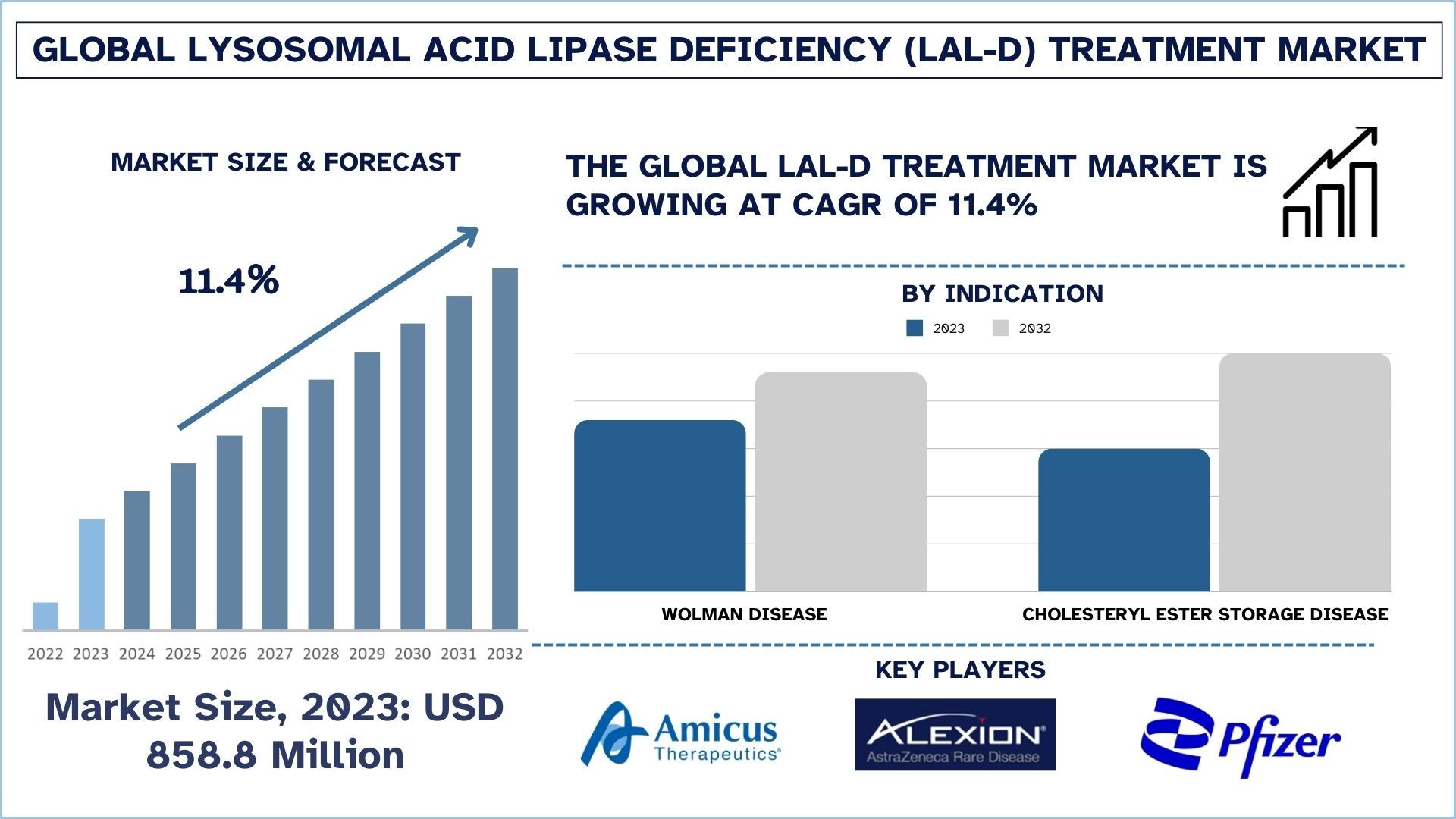
Размер и прогноз рынка лечения дефицита лизосомальной кислой липазы (LAL-D)
Объем рынка лечения дефицита лизосомальной кислой липазы (LAL-D) в 2023 году оценивался примерно в 858,8 млн долларов США и, как ожидается, будет расти со значительным среднегодовым темпом роста (CAGR) около 11,4% в течение прогнозируемого периода (2024–2032 гг.) из-за роста распространенности LAL-D, достижений в генной терапии и расширения фармацевтической промышленности.
Анализ рынка лечения дефицита лизосомальной кислой липазы (LAL-D)
Дефицит лизосомальной кислой липазы (LAL-D) — это генетическое заболевание, возникающее в результате мутаций, затрагивающих ген LIPA, который кодирует фермент LAL. Диагноз ставится с помощью генетических тестов, тестов на активность ферментов и визуализации. LAL-D — очень редкое аутосомно-рецессивное заболевание, возникающее в результате дефицита фермента LAL. LAL необходим для расщепления липидов, которые попадают в лизосомы клетки, таких как эфиры холестерина и триглицериды. В отсутствие или при низком уровне LAL эти липиды накапливаются во многих органах, вызывая серьезные повреждения и дисфункцию органов, например, печени, селезенки и кишечника. LAL-D проявляется в двух формах: первая — болезнь Вольмана, которая является тяжелой младенческой формой заболевания, а вторая — болезнь накопления эфиров холестерина (CESD), которая является легкой или поздно проявляющейся формой заболевания. Болезнь Вольмана обычно проявляется в первые несколько месяцев жизни, клинические признаки включают гепатомегалию, расширение желудка, задержку роста и желтуху. Это очень агрессивное заболевание, и если его не лечить, оно приводит к летальному исходу. CESD, однако, может протекать бессимптомно до детства или взрослого возраста, и у пациентов наблюдаются заболевания печени, жировые отложения и болезни сердца. Основное лечение включает фермент-заместительную терапию ERT с использованием себелипазы альфа, направленную на управление дефицитным ферментом.
Ключевыми драйверами и тенденциями рынка лечения дефицита лизосомальной кислой липазы (LAL-D) являются растущие инновации в ERT, меняющееся восприятие LAL-D и расширяющийся рынок редких заболеваний. Себелипаза альфа, рекомбинантная фермент-заместительная терапия, продемонстрировала эффективность в лечении как болезни Вольмана, так и CESD, а также способствовала росту рынка благодаря улучшению доступности. Заменяя отсутствующий фермент у пациентов с LAL-D, эта терапия стала стандартной для младенческих и тяжелых типов заболевания, улучшая продолжительность и качество жизни пациентов. Однако активные исследования в области генной терапии, которые дают надежду на более длительное лечение путем устранения фактической причины дефицита ферментов, подстегнули рынок и влили значительный капитал в исследования и разработки улучшенных продуктов и клинические испытания.
Тенденции рынка лечения дефицита лизосомальной кислой липазы (LAL-D)
В этом разделе рассматриваются ключевые рыночные тенденции, влияющие на различные сегменты рынка лечения дефицита лизосомальной кислой липазы (LAL-D), выявленные нашими экспертами-исследователями.
Акцент на исследования редких заболеваний
Ключевой тенденцией рынка лечения дефицита лизосомальной кислой липазы (LAL-D) является растущий интерес к исследованиям редких заболеваний. LAL-D известна и диагностируется у сравнительно небольшого числа людей, поэтому инвестиции в исследования и разработку этого заболевания были недостаточными. Однако в последнее десятилетие наблюдается явная тенденция уделять большое внимание развитию редких заболеваний и, в частности, генетических, благодаря прогрессу в области геномики, а также повышению осведомленности о генетических заболеваниях и, наконец, правительственным инициативам в области в основном неудовлетворенных потребностей. Этот повышенный интерес отчасти обусловлен возросшей осведомленностью о больших затратах, которые несут пациент и системы здравоохранения из-за редких заболеваний, которые приводят к серьезным и опасным для жизни последствиям, а также к ограниченным вариантам лечения. Таким образом, крупные фармацевтические и биофармацевтические компании, академические институты и исследовательские организации вкладывают больше венчурных инвестиций в разработку новых методов лечения LAL-D и всех других орфанных заболеваний.
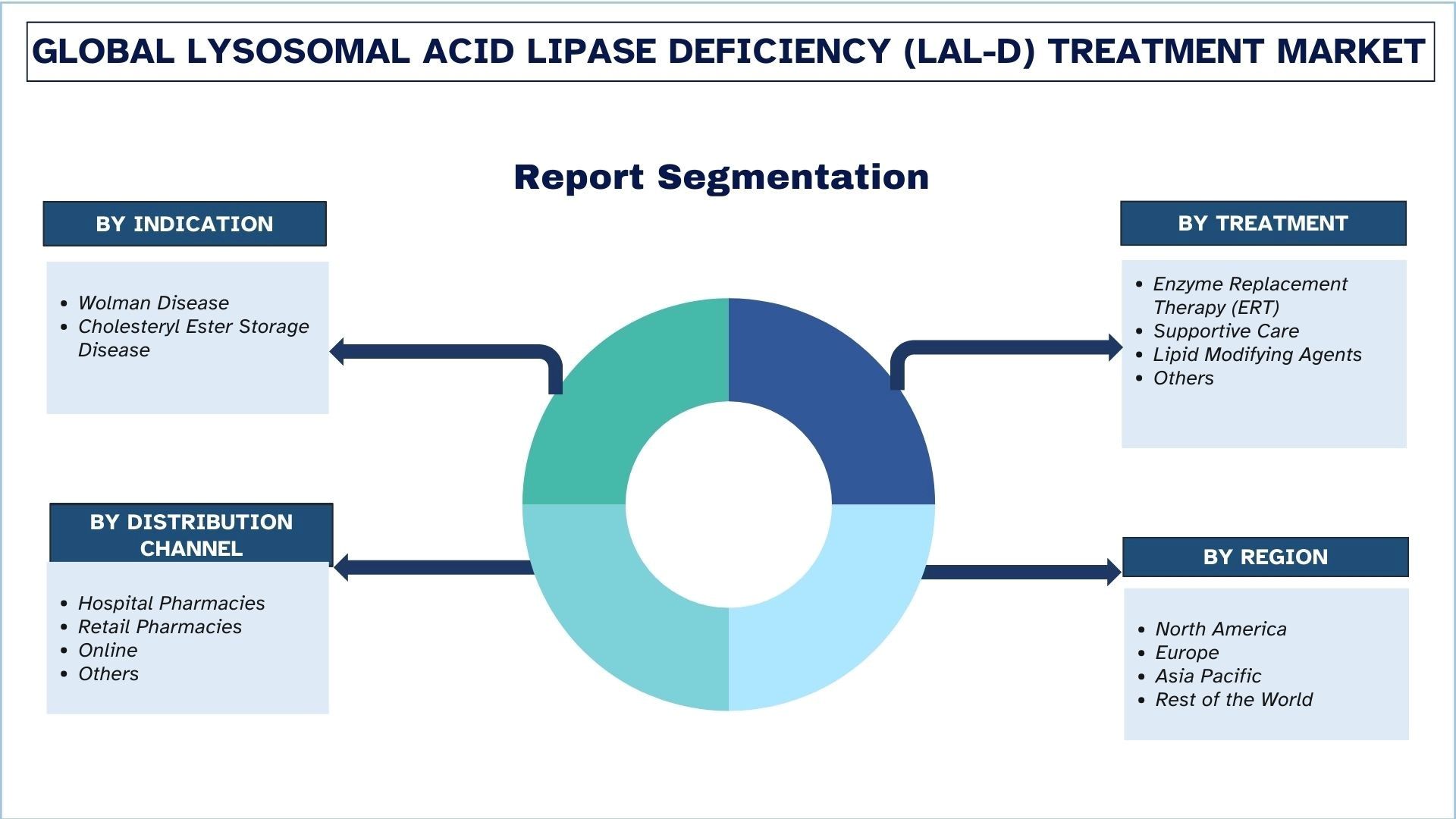
Северная Америка занимает значительную долю рынка в 2023 году.
Североамериканский рынок лечения LAL-D является крупнейшим и наиболее развитым благодаря своей мощной инфраструктуре здравоохранения, высокой осведомленности пациентов и акценту на лечении редких заболеваний. На сегодняшний день фермент-заместительная терапия (ERT), особенно себелипаза альфа, является основной формой лечения, применяемой для лечения болезни Вольмана и болезни накопления эфиров холестерина (CESD) в этом регионе. Общая заболеваемость LAL-D растет, что связано с расширением диагностических предложений и благоприятной рыночной политикой в отношении разработки методов лечения редких заболеваний. Кроме того, регион может похвастаться высокоразвитыми возможностями НИОКР, и ключевые фармацевтические компании сосредотачиваются на разработке новых методов лечения и комбинаций методов лечения. Закон об орфанных препаратах и обозначение орфанных препаратов поддерживают благоприятный рынок для разработки продуктов, что приводит к значительному росту рынка лечения LADL-D.
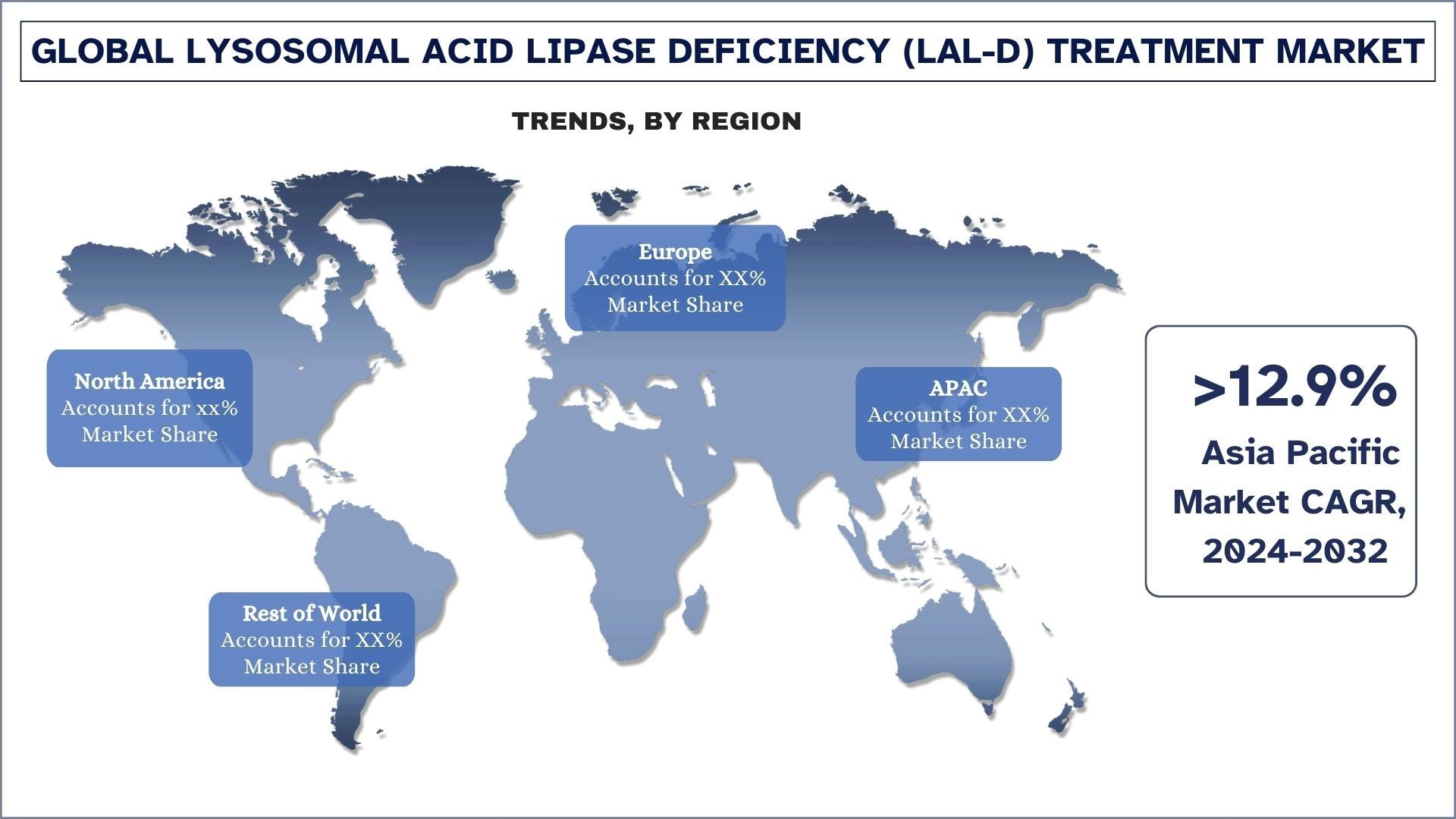
Обзор индустрии лечения дефицита лизосомальной кислой липазы (LAL-D)
Рынок лечения дефицита лизосомальной кислой липазы (LAL-D) является конкурентным, с несколькими глобальными и международными игроками. Ключевые игроки принимают различные стратегии роста для расширения своего присутствия на рынке, такие как партнерства, соглашения, сотрудничество, запуск новых продуктов, географическая экспансия, а также слияния и поглощения. Некоторыми из основных игроков, работающих на рынке, являются Alexion Pharmaceuticals (AstraZeneca), Amicus Therapeutics, Inc., Pfizer Inc., Lupin Pharmaceutical, Inc., Sun Pharmaceutical Industries Limited, Zydus Group, Teva Pharmaceuticals USA, Inc., Glenmark Pharmaceuticals Inc., Thermo Fisher Scientific Inc., Merck & Co., Inc.
Новости рынка лечения дефицита лизосомальной кислой липазы (LAL-D)
В октябре 2024 г. — AstraZeneca заключила эксклюзивное лицензионное соглашение с CSPC Pharmaceutical Group Ltd (CSPC) для продвижения разработки новой малой молекулы-разрушителя липопротеинов (a) (Lp(a)) на ранней стадии, которая может предложить дополнительные преимущества для пациентов с дислипидемией, что является критическим симптомом LAL-D.
В ноябре 2023 г. — Lupin и Zydus подписали лицензионное соглашение о совместном маркетинге Saroglitazar Mg, важнейшего препарата для лечения хронических заболеваний печени в Индии. Заболевание печени является основным клиническим состоянием при LAL-D, и эти терапевтические средства будут играть решающую роль в обеспечении поддерживающего лечения при LAL-D.
В марте 2023 г. MK-0616 компании Merck, экспериментальный пероральный ингибитор PCSK9, значительно снизил уровень LDL-C у пациентов с гиперхолестеринемией в исследовании фазы 2b. MK-0616 в целом хорошо переносился и снижал уровень LDL-C на всех уровнях дозы по сравнению с плацебо.
Объем охвата отчета о рынке лечения дефицита лизосомальной кислой липазы (LAL-D)
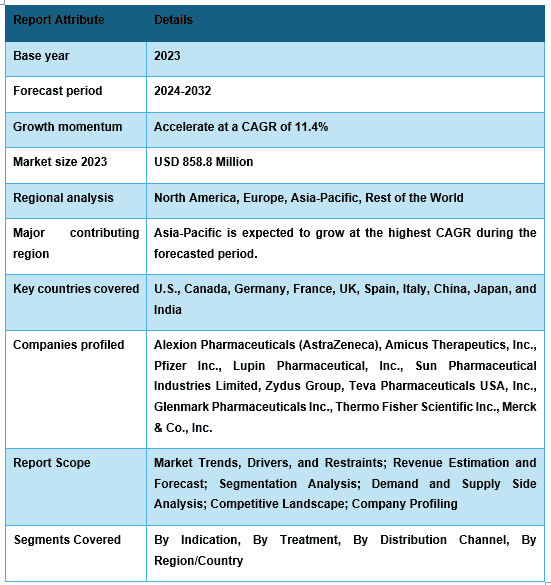
Причины купить этот отчет:
- Исследование включает анализ размера рынка и прогнозирования, подтвержденный аутентифицированными ключевыми экспертами отрасли.
- В отчете представлен краткий обзор общей производительности отрасли с первого взгляда.
- Отчет охватывает углубленный анализ видных представителей отрасли с основным упором на ключевые финансовые показатели бизнеса, портфели продуктов, стратегии расширения и последние разработки.
- Подробное изучение драйверов, ограничений, ключевых тенденций и возможностей, преобладающих в отрасли.
- Исследование всесторонне охватывает рынок по различным сегментам.
- Глубокий региональный анализ отрасли.
Варианты настройки:
Глобальный рынок лечения дефицита лизосомальной кислой липазы (LAL-D) может быть дополнительно настроен в соответствии с требованиями или любым другим сегментом рынка. Кроме того, UMI понимает, что у вас могут быть свои собственные бизнес-потребности, поэтому не стесняйтесь обращаться к нам, чтобы получить отчет, который полностью соответствует вашим требованиям.
Содержание
Методология исследования рынка лечения дефицита лизосомальной кислой липазы (LAL-D) (2022-2032 гг.)
Анализ исторического рынка, оценка текущего рынка и прогнозирование будущего рынка глобального рынка лечения дефицита лизосомальной кислой липазы (LAL-D) были тремя основными этапами, предпринятыми для создания и анализа проникновения лечения дефицита лизосомальной кислой липазы (LAL-D) в основных регионах мира. Было проведено исчерпывающее вторичное исследование для сбора исторических данных о рынке и оценки текущего размера рынка. Во-вторых, для подтверждения этих выводов было принято во внимание множество результатов и предположений. Кроме того, были проведены исчерпывающие первичные интервью с отраслевыми экспертами по всей цепочке создания стоимости глобального рынка лечения дефицита лизосомальной кислой липазы (LAL-D). После предположения и подтверждения рыночных показателей посредством первичных интервью мы использовали восходящий/нисходящий подход к прогнозированию общего размера рынка. После этого были приняты методы разбивки рынка и триангуляции данных для оценки и анализа размера рынка сегментов и подсегментов отрасли. Подробная методология описана ниже:
Анализ исторического размера рынка
Шаг 1: Углубленное изучение вторичных источников:
Было проведено подробное вторичное исследование для получения исторических данных о размере рынка лечения дефицита лизосомальной кислой липазы (LAL-D) из внутренних источников компании, таких как годовые отчеты и финансовая отчетность, презентации результатов деятельности, пресс-релизы и т. д., а также из внешних источников, включая журналы, новости и статьи, правительственные публикации, публикации конкурентов, отраслевые отчеты, сторонние базы данных и другие надежные публикации.
Шаг 2: Сегментация рынка:
После получения исторических данных о размере рынка лечения дефицита лизосомальной кислой липазы (LAL-D) мы провели подробный вторичный анализ для сбора исторических данных о рынке и доли различных сегментов и подсегментов для основных регионов. Основные сегменты, включенные в отчет, - это показания, лечение, канал сбыта и регионы. Далее был проведен анализ на уровне стран для оценки общего внедрения лечения дефицита лизосомальной кислой липазы (LAL-D) в этом регионе.
Шаг 3: Факторный анализ:
После получения исторических данных о размере рынка различных сегментов и подсегментов мы провели подробный факторный анализ для оценки текущего размера рынка лечения дефицита лизосомальной кислой липазы (LAL-D). Кроме того, мы провели факторный анализ с использованием зависимых и независимых переменных, таких как показания, лечение, канал сбыта и регионы рынка лечения дефицита лизосомальной кислой липазы (LAL-D). Был проведен тщательный анализ сценариев спроса и предложения с учетом ведущих партнерств, слияний и поглощений, расширения бизнеса и запуска продуктов на рынке лечения дефицита лизосомальной кислой липазы (LAL-D) по всему миру.
Оценка и прогноз текущего размера рынка
Определение текущего размера рынка: На основе практически применимых выводов, полученных на основе вышеуказанных 3 шагов, мы определили текущий размер рынка, ключевых игроков на глобальном рынке лечения дефицита лизосомальной кислой липазы (LAL-D) и доли рынка сегментов. Все необходимые процентные доли и разбивки рынка были определены с использованием вышеупомянутого вторичного подхода и проверены посредством первичных интервью.
Оценка и прогнозирование: Для оценки и прогнозирования рынка различным факторам, включая движущие силы и тенденции, ограничения и возможности, доступные для заинтересованных сторон, были присвоены веса. После анализа этих факторов были применены соответствующие методы прогнозирования, т. е. восходящий/нисходящий подход, чтобы получить прогноз рынка на 2032 год для различных сегментов и подсегментов на основных рынках мира. Методология исследования, принятая для оценки размера рынка, включает в себя:
Размер рынка отрасли с точки зрения выручки (в долларах США) и темпы внедрения лечения дефицита лизосомальной кислой липазы (LAL-D) на основных рынках внутри страны.
Все процентные доли, разделения и разбивки сегментов и подсегментов рынка.
Ключевые игроки на глобальном рынке лечения дефицита лизосомальной кислой липазы (LAL-D) с точки зрения предлагаемых продуктов. Кроме того, стратегии роста, принятые этими игроками для конкуренции на быстрорастущем рынке.
Подтверждение размера и доли рынка
Первичное исследование: Были проведены углубленные интервью с ключевыми лидерами мнений (KOL), включая руководителей высшего звена (CXO/вице-президенты, руководители отделов продаж, руководители отделов маркетинга, руководители операционных отделов, руководители региональных отделов, руководители страновых отделов и т. д.) в основных регионах. Затем результаты первичных исследований были обобщены, и был проведен статистический анализ для доказательства заявленной гипотезы. Вклад от первичных исследований был объединен со вторичными результатами, что превратило информацию в практически применимые выводы.
Разделение первичных участников по различным регионам
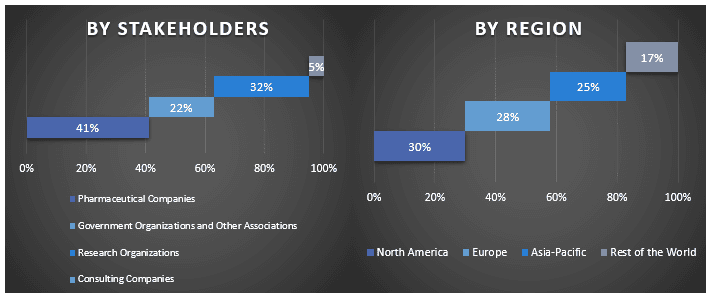
Инжиниринг рынка
Метод триангуляции данных был использован для завершения общей оценки рынка и получения точных статистических данных для каждого сегмента и подсегмента глобального рынка лечения дефицита лизосомальной кислой липазы (LAL-D). Данные были разделены на несколько сегментов и подсегментов после изучения различных параметров и тенденций в показаниях, лечении, канале сбыта и регионах глобального рынка лечения дефицита лизосомальной кислой липазы (LAL-D).
Основная цель исследования глобального рынка лечения дефицита лизосомальной кислой липазы (LAL-D)
В исследовании были точно определены текущие и будущие рыночные тенденции глобального рынка лечения дефицита лизосомальной кислой липазы (LAL-D). Инвесторы могут получить стратегические выводы для обоснования своих решений об инвестициях на основе качественного и количественного анализа, проведенного в исследовании. Текущие и будущие рыночные тенденции определили общую привлекательность рынка на региональном уровне, предоставив промышленным участникам платформу для использования неиспользованного рынка для получения выгоды от преимущества первопроходца. Другие количественные цели исследований включают:
- Анализ текущего и прогнозируемого размера рынка лечения дефицита лизосомальной кислой липазы (LAL-D) в стоимостном выражении (доллары США). Кроме того, анализ текущего и прогнозируемого размера рынка различных сегментов и подсегментов.
- Сегменты в исследовании включают области показаний, лечения, канала сбыта и регионов.
- Определение и анализ нормативно-правовой базы для лечения дефицита лизосомальной кислой липазы (LAL-D)
- Анализ цепочки создания стоимости с участием различных посредников, а также анализ поведения клиентов и конкурентов в отрасли.
- Анализ текущего и прогнозируемого размера рынка лечения дефицита лизосомальной кислой липазы (LAL-D) для основных регионов.
- Основные страны регионов, изученные в отчете, включают Азиатско-Тихоокеанский регион, Европу, Северную Америку и остальной мир.
- Профили компаний рынка лечения дефицита лизосомальной кислой липазы (LAL-D) и стратегии роста, принятые участниками рынка для поддержания быстрорастущего рынка.
- Углубленный анализ отрасли на региональном уровне.
Часто задаваемые вопросы Часто задаваемые вопросы
В1: Каков текущий размер рынка лечения дефицита лизосомальной кислой липазы (LAL-D) и его потенциал роста?
Объем рынка препаратов для лечения дефицита лизосомальной кислой липазы (LAL-D) в 2023 году оценивался в 858,8 млн долларов США и, как ожидается, будет расти со среднегодовым темпом роста (CAGR) в 11,4% в течение прогнозируемого периода (2024–2032 гг.).
В2: Каковы движущие факторы роста рынка лечения дефицита лизосомальной кислой липазы (LAL-D)?
Растущая заболеваемость LAL-D, инновации и достижения в генной терапии и ЗФТ, благоприятная нормативно-правовая база и расширение исследований и разработок стимулируют рынок лечения дефицита лизосомальной кислой липазы (LAL-D).
В3: Какой сегмент имеет наибольшую долю рынка лечения дефицита лизосомальной кислой липазы (LAL-D) по показаниям?
Сегмент болезни Вольмана занимает наибольшую долю рынка лечения дефицита лизосомальной кислой липазы (LAL-D) по показаниям.
Q4: Каковы основные тенденции на рынке лечения дефицита лизосомальной кислой липазы (LAL-D)?
Повышенное внимание к исследованиям редких заболеваний, защите прав пациентов и программам повышения осведомленности являются основными тенденциями на рынке лечения дефицита лизосомной кислой липазы (LAL-D).
В5: Какой регион будет доминировать на рынке лечения дефицита лизосомальной кислой липазы (LAL-D)?
В 2023 году в Северной Америке доминировали на рынке.
Связанные Отчеты
Клиенты, купившие этот товар, также купили

